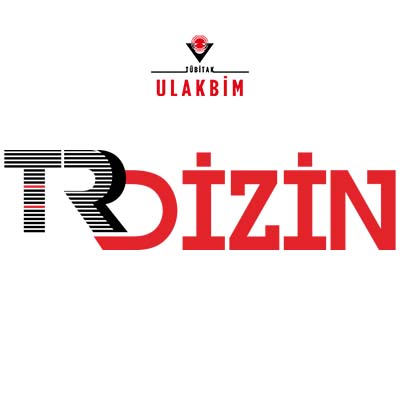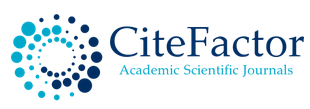Sporun Sosyal Etkisi Ölçeği: Bir Ölçek Geliştirme Çalışması
DOI:
https://doi.org/10.63556/ankad.v9i2.240Anahtar Kelimeler:
Spor, toplum, sosyal etki, ölçek geliştirmeÖzet
Öz
Bu çalışmanın amacı, sporun toplumda meydana getirdiği etkilerin belirlenmesinde geçerliliği ve güvenilirliği kanıtlanmış bir ölçme aracı geliştirmektir. Araştırmanın çalışma grubunu, Ankara ilinde bulunan 2021-2022 eğitim öğretim yılında farklı üniversite ve farklı fakültelerde öğrenim gören en az bir yıllık spor deneyimini halen sürdürmekte olan 833 öğrenci oluşturmaktadır. Araştırmada ölçeğin kapsam geçerliliğini belirlemek amacıyla spor bilimleri alanında uzman akademisyenlerden maddelere ilişkin dönütler alınarak uygun görülmeyen maddeler ölçekten çıkarılmıştır. Maddelerin anlaşılırlığını belirlemek üzere amaca uygun 45 üniversite öğrencisi pilot uygulamaya katkı sağlamıştır. Taslak ölçme aracının yapı geçerliliğini sağlamak için 355 kişi ile açımlayıcı faktör analizi (AFA), yapının doğrulanması için 478 katılımcı ile doğrulayıcı faktör analizi (DFA) yapılmıştır. Yapılan analizler sonucunda; 27 madde ve 4 alt boyuttan (Sosyal sermaye, İyi oluş, Kültürel sermaye ve Sağlık okuryazarlığı) oluşan “sporun sosyal etkisi ölçeği” geliştirilmiştir. Ölçme aracının güvenirliği, Cronbach Alfa ve madde toplam korelasyonu değerleri ile yorumlanmıştır. Analiz sonuçları, geçerlik ve güvenilirlik açısından uygulanabilir olduğunu ortaya koymaktadır.
Referanslar
Armour, K., and Sandford, R. (2013). Positive youth development through an outdoor physical activity programme: Evidence from a four-year evaluation. Educational review, 65(1), 85-108.
Balduck, A. L., Maes, M., and Buelens, M. (2011). The social impact of the Tour de France: Comparisons of residents' pre-and post-event perceptions. European Sport Management Quarterly, 11(2), 91-113.
Baumgartner, H., and Homburg, C. (1996). Applications of structural equation modeling in marketing and consumer research: a review. International Journal of Research in Marketing, 13(2), 139-161.
Beutler, I. (2008). Sport serving development and peace: Achieving the goals of the United Nations through sport. Sport in society, 11(4), 359-369.
Burnett, C. (2009). Engaging sport-for-development for social impact in the South African context, Sport in Society, 12:9, 1192-1205, DOI: 10.1080/17430430903137852
Burnett, C. (2010). Sport-for-development approaches in the South African context: A case study analysis. South African Journal for Research in Sport, Physical Education and Recreation 32(1): 29–42.
Burnett, C. (2015). Assessing the sociology of sport: on Sport for Development and Peace. International Review for the Sociology of Sport 50(4–5): 385–390.
Byrne, B. M. (2010). Structural equation modeling with AMOS: Basic concepts, applications, and programming. New York: Routledge.
Cunningham, J., and Beneforti, M. (2005). Investigating indicators for measuring the health and social impact of sport and recreation programs in Australian indigenous communities. International Review for the Sociology of Sport, 40(1), 89-98.
Darnell, S. C., and Hayhurst, L. M. (2011). Sport for decolonization: Exploring a new praxis of sport for development. Progress in development studies, 11(3), 183-196.
Davies, L. E., Taylor, P., Ramchandani, G., and Christy, E. (2019). Social return on investment (SROI) in sport: a model for measuring the value of participation in England. International Journal of Sport Policy and Politics, 11(4), 585-605.
Delaney, L., and Keaney, E. (2005). Sport and social capital in the united kingdom: statistical evidence from national and international survey data. Dublin: Economic and Social Research Institute and Institute for Public Policy Research, 32, 1-32.
Ding, L., Velicer, W. F., and Harlow, L. L. (1995). Effects of estimation methods, number of indicators per factor, and improper solutions on structural equation modeling fit indices. Structural Equation Modeling: A Multidisciplinary Journal, 2(2), 119-143.
Doll, W.J., Xia, W., and Torkzadeh, G. (1994). A confirmatory factor analysis of the end-user computing satisfaction instrument, MIS Quarterly, 18(4), 357–369.
Duman, F. K. (2020). Sporun sosyal bütünleşme üzerindeki etkileri. Spor Eğitim Dergisi, 4(3), 169-177.
Esteves, A., and Vanclay, F. (2013). Social Impact Assessment and Management, presentation. University of Strathclyde, 19-20.
Fabrigar, L. R., Wegener, D. T., MacCallum, R. C. and Strahan, E. J. (1999). Evaluating the use of exploratory factor analysis in psychological research. Psychological Methods, 4(3), 272-299.
Fişek, K. (1998). Dünya’da ve Türkiye’de Spor Yönetimi. Ankara: Bağırgan Yayımevi, 34.
Fornell, C., and Larcker, D. F. (1981). Evaluating structural equation models with unobservable variables and measurement error. Journal of Marketing Research, 39-50.
Giulianotti, R., and Armstrong, G. (2013). The sport for development and peace sector: A critical sociological analysis. In Global sport-for-development (pp. 15-32). Palgrave Macmillan, London.
Hair, J. F., Anderson, R. E., Tatham, R. L. & Black, W. C. (1998). Multivariate data analysis. (5.th Ed). Prentice Hall, New Jersey.
Hartmann, D., & Kwauk, C. (2011). Sport and development: An overview, critique, and reconstruction. Journal of sport and social issues, 35(3), 284-305.
Hu, L. T., and Bentler, P. M. (1999). Cutoff criteria for fit indexes in covariance structure analysis: Conventional criteria versus new alternatives. Structural Equation Modeling: A Multidisciplinary Journal, 6(1), 1-55.
İnternet: IOC, (2022). Web: https://olympics.com/ioc/overview, adresinden 5 Aralık 2022’de alınmıştır.
Kaplan, Y., ve Çetinkaya, G. (2014). Spor yoluyla toplumsallaşma-yeniden toplumsallaşma süreci. International Journal of Sport Culture and Science, 2(Special Issue 2), 120-125.
Kay, T. (2009). Developing through sport: Evidencing sport impacts on young people. Sport in society, 12(9), 1177-1191.
Kline, R. B. (2015). Principles and practice of structural equation modeling. New York: Guilford publications.
Latané, B. (1981). The psychology of social impact. American Psychologist, 36(4), 343. https://doi.org/10.1037/0003-066X.36.4.343
Lawson, H. A. (2005). Empowering people, facilitating community development, and contributing to sustainable development: The social work of sport, exercise, and physical education programs. Sport, Education and Society, 10(1), 135-160.
Lee, S. P., Cornwell, T. B., and Babiak, K. (2013). Developing an instrument to measure the social impact of sport: social capital, collective identities, health literacy, well-being and human capital. Journal of Sport Management, 27(1), 24-42.
Misener, L., and Schulenkorf, N. (2016). Rethinking the social value of sport events through an asset-based community development (ABCD) perspective. Journal of Sport Management, 30(3), 329-340.
Munro, B. (2005). Role Models: Is Anything More Important for Future Development? Role Models Retreat, Laureus Sport for Good Foundation, 23-24.
Nunnally, J. C., and Bernstein, I. H. (1994). Psychometric theory (3rd Ed.). New York: McGraw-Hill
Özdinç, Ö. (2005). Çukurova üniversitesi öğrencilerinin sporun ve spora katilimin sosyalleşmeyle ilişkisi üzerine görüşleri. Spormetre Beden Eğitimi ve Spor Bilimleri Dergisi, 3(2), 77-84.
Ramazanoğlu, F., Karahüseyinoğlu, M. F., Demirel, E. T., Ramazanoğlu, M. O., ve Altungül, O. (2005). Sporun toplumsal boyutlarının değerlendirilmesi. Fırat Üniversitesi Doğu Araştırmaları Dergisi, 3(3), 153-157.
Roche, C. J. (1999). Impact assessment for development agencies: Learning to value change. Oxford: Oxfam GB,21
Seippel, Ø. (2006). Sport and social capital. Acta sociologica, 49(2), 169-183.
Sivri, S. (2022). Üniversite öğrencilerinin sportif sermaye ve sporun sosyal etkisine ilişkin görüşleri. Doktora Tezi, Ankara Üniversitesi. Sağlık Bilimleri Enstitüsü, 116,715045
Spaaij, R. (2009). The social impact of sport: diversities, complexities and contexts. Sport in society, 12(9), 1109-1117.
Tabachnick, B. G. and Fıdell, Linda S. (2007). Using Multivariate Statistics, Allyn And Bacon Publisher, Boston.5.
Teke, M. S., ve Karakuş, S. (2022). Sporun sosyal gelişim sürecine etkisi. Sciences (Joshas Journal), 8(53).
Tonts, M. (2005). Competitive sport and social capital in rural Australia. Journal of rural studies, 21(2), 137-149.
Ünal, H. (2014). Spor bilincinin yaygınlaştırılmasında sosyal pazarlamanın toplum tutumuna etkisi. CBÜ Beden Eğitimi ve Spor Bilimleri Dergisi, 6(2), 11-22.
Vanclay, F. (2003). International Principles For Social Impact Assessment. Impact Assessment and Project Appraisal, 21, 5–12.
Yalçın, U., ve Balcı, V. (2013). 7-14 Yaş arası çocuklarda spora katılımdan sonra okul başarılarında, fiziksel ve sosyal davranışlarında oluşan değişimlerin incelenmesi. Spormetre Beden Eğitimi ve Spor Bilimleri Dergisi, 11(1), 27-33.
Yetim, A. (2000). Sporun sosyal görünümü. Gazi Beden Eğitimi ve Spor Bilimleri Dergisi, 5(1), 63-72.
Yıldırım, A. ve Şimşek, H. (2016). Sosyal bilimlerde nitel araştırma yöntemleri. Ankara: Seçkin Yayıncılık, 71.
Yılmaz, B., Karlı, Ü., ve Yetim, A. A. (2006). Sporda sosyal bütünleşme ölçeği (ssbö) geçerlik ve güvenirlik çalışması. Gazi Beden Eğitimi ve Spor Bilimleri Dergisi, 11(4), 3-10.
Yüksel, M. (2020). Sporun sosyal hareketlilik üzerindeki rolü. Ordu Üniversitesi Sosyal Bilimler Enstitüsü Sosyal Bilimler Araştırmaları Dergisi, 10(3), 919-930.
İndir
Yayınlanmış
Nasıl Atıf Yapılır
Sayı
Bölüm
Lisans
Telif Hakkı (c) 2025 Anadolu Kültürel Araştırmalar Dergisi (ANKAD)

Bu çalışma Creative Commons Attribution-NonCommercial 4.0 International License ile lisanslanmıştır.













